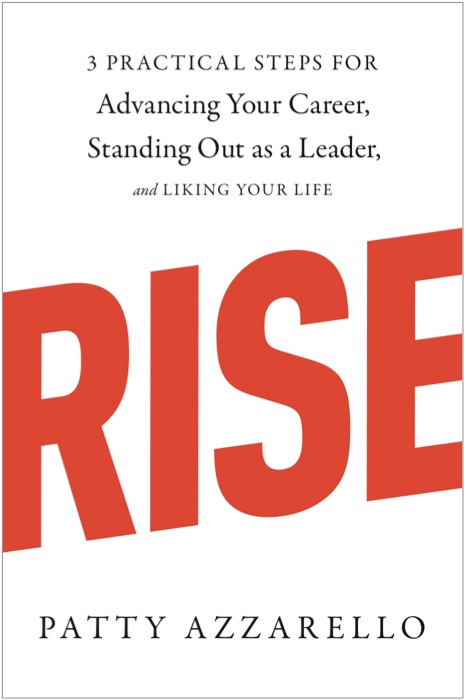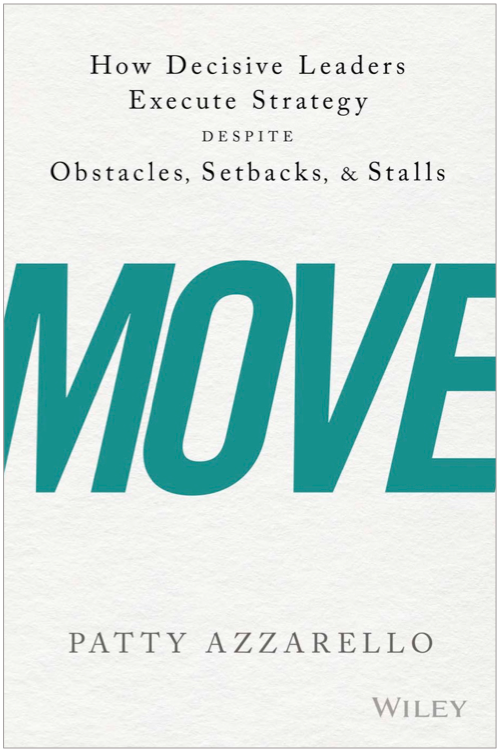Success does not equal doing everything.
In my work with a variety of companies, there is a very common and shared view that executives want their managers to be more strategic.
Likewise, I see many managers struggle for 3 reasons:
1. They are not sure what being more strategic actually looks like
2. They are overwhelmed with work
3. They think they are supposed to do everything that is asked of them
Managers struggle when they equate high performance with succeeding at everything equally. This in itself could be a definition for what strategic isn’t!
In case you missed it, I made a chart: What it means to be strategic.
The real job of a leader
Choosing and sticking to priorities is one of hardest (and most important) things that a leader can do, and it’s the thing that makes the best leaders stand out.
Managers who prioritize and execute well specifically on *not everything* get ahead because they get the most important stuff done really well.
When you try to do everything you don’t even give your chance to do anything really well.
High performance = thinking, then pushing back
At some point you have to step back and admit: this workload is impossible!
And you have to recognize that your job is not actually to try to do everything and die trying, but to assess, evaluate, and reorganize your workload into something that IS doable.
The high performers in my organizations were the ones who would come back to me and say, “Of these 37 things you have asked me to do, I believe that these 5 no longer matter; I think these 3 can be combined into one project that another group is already working on; and I believe that based on where the business is right now, these 2 things are the critical priorities that I need to get done first. Do I have your support to finish these 2 and put the rest at a lower level of priority until I get these done?
That is what being strategic looks like. That is what high performance looks like.
The people who would try to do everything and not succeed, or tell me that the workload is unreasonable or constantly ask for more resources were not the high performers. They were the non-strategic people who were trying to do everything.
Dealing with the impossible is a part of the job
As a leader, your job is to take an impossible, unmanageable workload and understand that a key part of your job is to find a productive way to deal with that fact, vs. seeing too much work as something that is making your job un-doable.
Every leader faces the same un-doable workload.
Once you focus on dealing with this as an integral part of your job, you can invest positive energy to turn the unreasonable workload into a better workload that has higher value and IS doable. THAT is being more strategic.
What CAN you do?
It’s your job to understand what matters to the business and to figure out how to improve the work, the processes, and the environment. Question old habits. Stop doing things that are no longer necessary or doing things in ways that take more time than the outcome is worth. Decide which piece of your overwhelming workload will create the most business value and start there.
Come up with a compelling proposal about what you CAN do. Get support for it, focus on it, and finish it.
People will start to recognize you as a high performer that can get really important things done in a chaotic environment. You will stand out because this is hard to do.
Less work, more value
When I work with organizations on this issue of prioritization and negotiating and communicating priorities, a few good things happen:
1. The organization gets aligned on the most important priorities
2. The executives realize that they need to offer permission to push back when those priorities are put at risk by an overwhelming workload
3. The managers realize they not only have permission, but are expected to think through the workload, make recommendations for what to prioritize and why
4. The managers realize that high performance does not equal trying to do everything, but in fact that high performance does equal identifying, proposing, prioritizing and completing the highest value tasks, and finding a way to deal with the rest of the workload — without trying to do it all equally
5. The executives get more time to do their executive jobs, as the managers take on more and more of the strategic thinking and decision making
As an executive, it is worthwhile to spell this out for your managers, because many of them are living in fear. They know that they can’t do everything, but they are thinking that that’s what the job is, and that that is what you expect them to do.
Give them the permission to have this conversation.
Put your Strategy into Action.
Give me a call if you’d like some help with getting strategic the priorities in your business more clearly defined, or with getting your team aligned on the priorities, or helping your team develop the habits and skills to stay focused on the execution of strategic priorities.
What do you think?
Join the conversation about this on my facebook page.
Was this useful?
If you found this article useful, please help me share it with others and encourage them to subscribe to this Blog for free.
Patty Azzarello is an executive, best-selling author, speaker and CEO/Business Advisor. She became the youngest general manager at HP at the age of 33, ran a billion dollar software business at 35 and became a CEO for the first time at 38 (all without turning into a self-centered, miserable jerk)
You can find Patty at www.AzzarelloGroup.com, follow her on twitter or facebook, or read her book RISE…3 Practical Steps for Advancing Your Career, Standing Out as a Leader, AND Liking Your Life.





